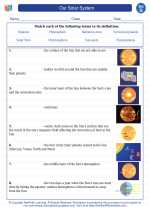Our Solar System
The solar system consists of the Sun, planets, their moons, and other objects such as asteroids and comets that orbit the Sun. It is located in the Milky Way galaxy and is a fascinating subject of study in astronomy. Let's explore some key concepts related to our solar system:
The Sun
The Sun is a star at the center of our solar system. It is a massive ball of hot gas that provides heat and light to the planets. The Sun's energy is produced through nuclear fusion, where hydrogen atoms combine to form helium, releasing a tremendous amount of energy.
The Planets
There are eight planets in our solar system, divided into two groups: terrestrial planets and gas giants. The terrestrial planets, including Mercury, Venus, Earth, and Mars, are rocky and relatively small. The gas giants, Jupiter, Saturn, Uranus, and Neptune, are much larger and primarily composed of gases.
Terrestrial Planets
- Mercury: The closest planet to the Sun with extreme temperature variations.
- Venus: Known for its thick atmosphere and intense greenhouse effect.
- Earth: Our home planet, the only known world to support life.
- Mars: Often called the "Red Planet" due to its reddish appearance, and the focus of exploration for possible past or present life.
Gas Giants
- Jupiter: The largest planet in the solar system with a prominent system of rings and many moons.
- Saturn: Known for its extensive ring system and numerous moons, including Titan.
- Uranus: Rotates on its side and has a faint ring system and a bluish tint due to methane in its atmosphere.
- Neptune: The farthest planet from the Sun, with active weather patterns and a large moon named Triton.
Moons
Many of the planets in our solar system have moons, or natural satellites, that orbit around them. For example, Earth has one moon, while Jupiter has over 70 known moons, including the four largest ones known as the Galilean moons.
Other Objects
In addition to the planets and their moons, the solar system contains other objects such as asteroids, comets, and dwarf planets. These objects provide valuable insights into the formation and evolution of our solar system.
Study Guide
- What is the Sun and how does it produce energy?
- List and describe the terrestrial planets in our solar system.
- Discuss the characteristics of the gas giant planets.
- Explain the significance of moons in our solar system.
- What are some other objects present in our solar system, and what role do they play in our understanding of the solar system?
Studying the solar system can be an exciting journey into the mysteries of the universe, and it offers a deeper understanding of our place in the cosmos.
.◂Science Worksheets and Study Guides Seventh Grade. Our Solar System

 Activity Lesson
Activity Lesson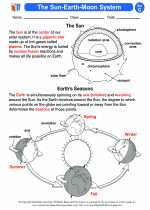
 Activity Lesson
Activity Lesson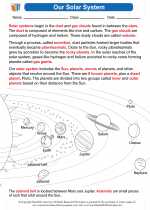
 Worksheet/Answer key
Worksheet/Answer key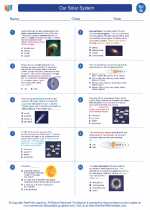
 Worksheet/Answer key
Worksheet/Answer key
 Worksheet/Answer key
Worksheet/Answer key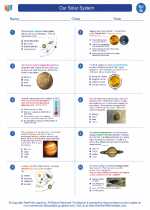
 Worksheet/Answer key
Worksheet/Answer key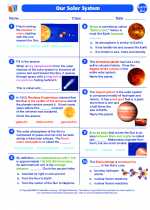
 Vocabulary/Answer key
Vocabulary/Answer key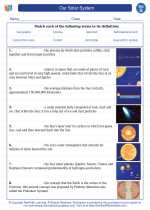
 Vocabulary/Answer key
Vocabulary/Answer key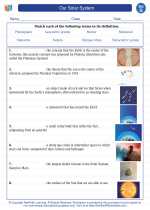
 Vocabulary/Answer key
Vocabulary/Answer key